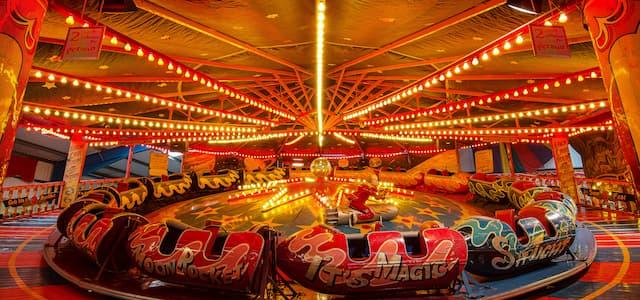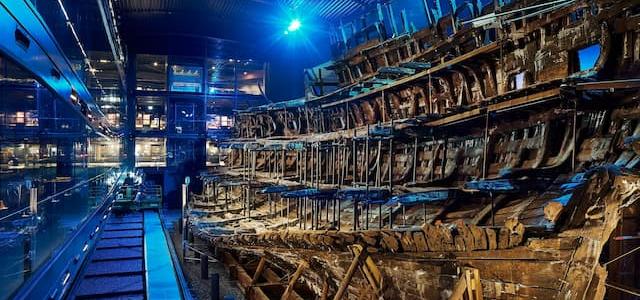
British Library acquires the Dering Roll
The Dering Roll, the oldest extant English roll of arms, dating from c. 1270-1280, has been acquired by the British Library following a successful fundraising campaign.

The Roll depicts 324 coats of arms, approximately a quarter of the entire English baronage during the reign of King Edward I, making it a vital record for the study of knighthood in medieval England. The Dering Roll was acquired with the aid of the National Heritage Memorial Fund (£100,000), The Art Fund, the UK’s leading independent art charity (£40,000), Friends of the British Library (£10,000), Friends of the National Libraries (£10,000) and numerous donations from individual supporters.
The Dering Roll was sold by Sotheby’s at auction on 4th December 2007 as Lot 46 for £192,500 (hammer price with buyer’s premium).
A temporary export bar was subsequently placed on the medieval roll of arms by Culture Minister, Margaret Hodge, and the item was awarded a starred rating by the Reviewing Committee on the Export of Works of Art and Objects of Cultural Interest, confirming it to be of particular importance and of outstanding significance for the study of early English heraldry. Following this decision the British Library sought funding in order to acquire the manuscript.
The Dering Roll, a painted roll of arms, was produced in England, almost certainly in Dover, in the last quarter of the 13th century. While examples of medieval coats-of-arms remain common today, large collections of arms on rolls - one of the grandest medieval statements of power - are extremely rare. The Dering Roll contains 324 coats-of-arms, approximately one quarter of the English baronage at that time, beginning with two of King John's illegitimate children, Richard Fitz Roy and William de Say.
In a study published in 1965, medieval history scholar Dr Noel Denholm-Young demonstrated that the Roll supplies a list of the knights owing feudal service to the Constable of Dover Castle. This led to the suggestion that the Dering Roll was commissioned by Stephen of Penchester, who served as Constable at Dover Castle from 1268 to 1299. Stephen of Penchester’s own arms are displayed in a prominent position on this roll, and it has been proposed that this manuscript may have served a political purpose, bringing together in one place the coats of arms of Stephen’s feudal followers.
The Roll later came into the ownership of the notable antiquary, Sir Edward Dering (1598–1644), who probably acquired it during his years of service as lieutenant of Dover Castle.
The parchment roll measures 2645mm by c. 210mm and is complete, consisting of 4 membranes, each measuring approximately 660mm in length. Painted on a green background, it contains 324 coats of arms arranged in 54 rows, with 6 shields assigned to each line. Above each shield is written the knight’s name in English cursive script, with the exception of five shields where the names have been omitted or erased.
The Dering Roll is now on display in the Sir John Ritblat Gallery: Treasures of the British Library. The manuscript will subsequently be available to researchers in the British Library’s Manuscripts Reading Room.
Claire Breay, Head of Medieval and Earlier Manuscripts at the British Library, commented: “The Dering Roll was identified as a priority acquisition for the British Library, and we are very pleased that we were able to secure the funding required to purchase the Roll and keep it in the UK. The Library holds an extensive collection of outstanding historical and heraldic manuscripts and the acquisition of the Dering Roll provides an extremely rare chance to add a manuscript of enormous local and national significance which will greatly strengthen and complement its existing collection”.
Carole Souter, Chief Executive of the National Heritage Memorial Fund, said: "The Dering Roll provides a fascinating insight into the allegiances and loyalties that ruled the lives of the medieval aristocracy. The Roll is the ‘Who's Who’ for medieval knights and unusually gives two illegitimate royals pride of place. It is fitting that this manuscript will now be displayed at the British Library thanks to a grant from the National Heritage Memorial Fund."
David Barrie, Director of The Art Fund, said: “This is the oldest English heraldic manuscript known, and offers a fascinating insight into courtly life in the reign of Edward I. It is also a very appealing work of art which probably arose from one man’s attempt to prove the noble ancestry of his own family. I am delighted that The Art Fund has helped to ensure the Roll will now be permanently available, free of charge, in the nation’s greatest library.”
Notes to editors
The Dering Roll
The Dering Roll was acquired with the aid of the National Heritage Memorial Fund (£100,000), The Art Fund, the UK’s leading independent art charity’ (£40,000), Friends of the British Library (£10,000), Friends of the National Library (£10,000) and numerous donations from individual supporters. The total purchase price paid by the British Library (including VAT) was £194,184.
The British Library
The British Library is the national library of the United Kingdom and one of the world's greatest research libraries. It provides world-class information services to the academic, business, research and scientific communities and offers unparalleled access to the world's largest and most comprehensive research collection. The Library's collection has developed over 250 years and exceeds 150 million separate items representing every age of written civilisation. It includes: books, journals, manuscripts, maps, stamps, music, patents, newspapers and sound recordings in all written and spoken languages.
The MLA
The Reviewing Committee on the Export of Works of Art and Objects of Cultural Interest is administered by the MLA - government's agency for museums, libraries and archives. Leading strategically, the MLA promotes best practice to inspire innovative, integrated and sustainable services for all.
The Art Fund
The Art Fund is the UK’s leading independent art charity. It offers grants to help UK museums and galleries enrich their collections; campaigns on behalf of museums and their visitors; and promotes the enjoyment of art. It is entirely funded from public donations and has 80,000 members. Since 1903 the charity has helped museums and galleries all over the UK secure 860,000 works of art for their collections. Recent achievements include: helping secure Anthony d’Offay’s collection, ARTIST ROOMS, for Tate and National Galleries of Scotland in February 2008 with a grant of £1million; putting together a unique funding package to ensure Dumfries House in Ayrshire and its contents were secured intact for the nation in July 2007; and running the ‘Buy a Brushstroke’ public appeal which raised over £550,000 to keep Turner’s Blue Rigi watercolour in the UK.
The Friends of the British Library
The Friends of the British Library is an independent, registered charity, which makes regular grants to the Library for acquisitions, exhibition, new equipment, facilities, and other activities. With over 3,000 Members and extremely successful programme of events, the charity’s aim is to protect our intellectual, scientific and cultural heritage for future generations.
The Friends of the National Libraries
The Friends of the National Libraries is a registered charity founded in 1931 to help the nation's libraries to acquire manuscripts, archives and rare printed books, especially those of national or local importance which might otherwise be exported. In 2007 the Friends made grants totalling nearly £200,000 to national, university and local authority libraries, county record offices and other institutions.
Further information
Ruth Howlett, British Library Press Officer:
Phone: 020 7412 7112 Email: ruth.howlett@bl.uk
The Art Fund Press Office
Phone: 020 7225 4888
Clare Makepeace or Alex Gaskell, NHMF press officer,
Phone: 020 7591 6143 / 6032 Mobile: 07973 613 820.

